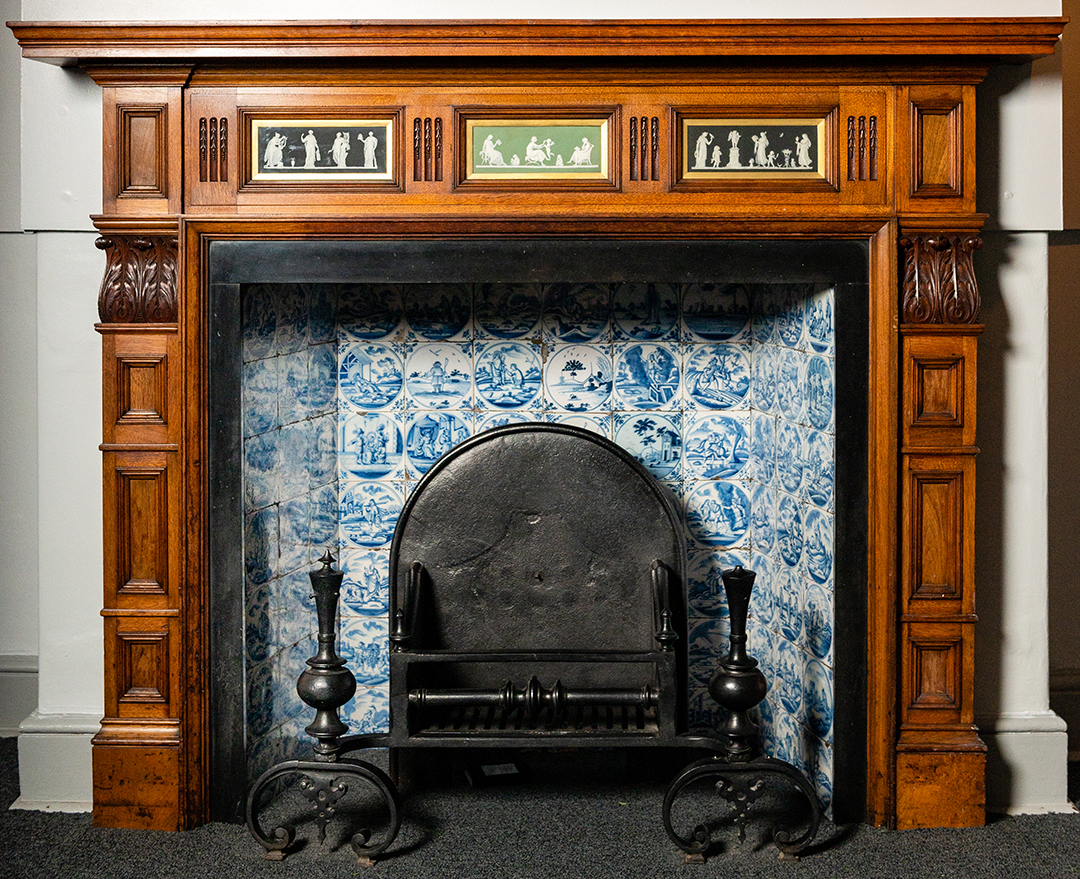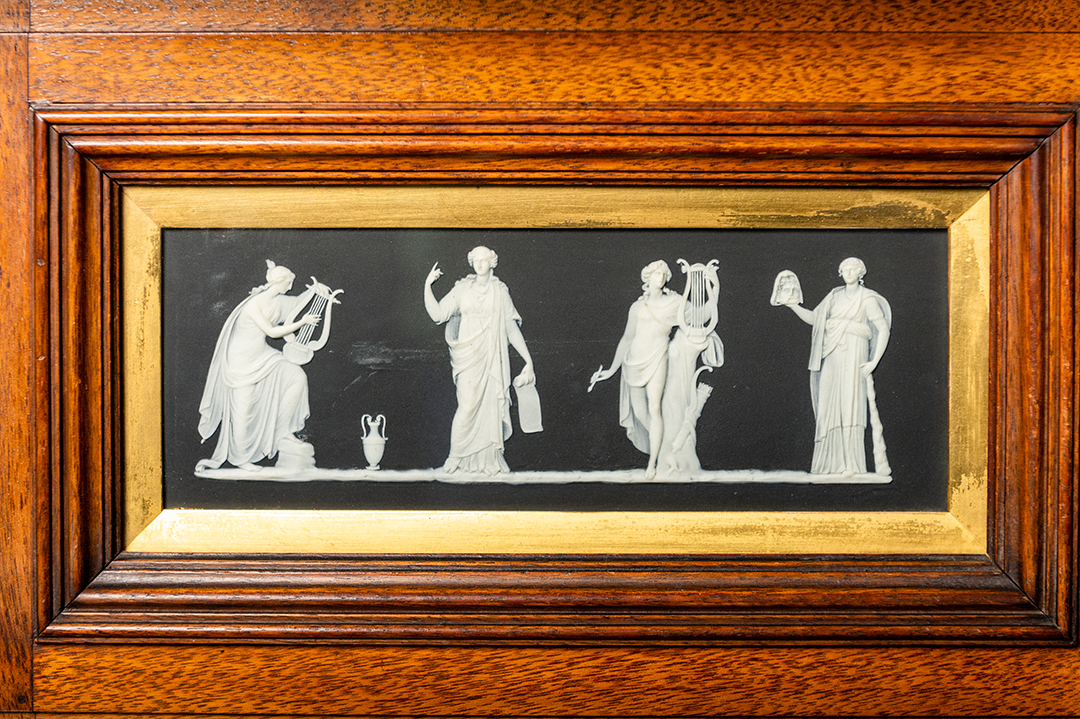The original fireplaces of Sudley House | In pictures
Take inspiration from the grand fireplaces of Sudley House, each with their own beautiful and intricate design.

Part of the original features of Sudley House, are its many grand fireplaces. The installation of these fireplaces were part of redecoration by previous owner and Liverpool merchant George Holt in 1884. Along with panelling, bookcases and fashionable new wallpaper, their design was influenced by the Aesthetic movement, which saw artists and designers making objects beautiful for their own sake, as a reaction to what they saw as the ugliness of machine manufactures. As such, these cosy furnaces display beauty and intricacy aplenty.
Entrance Hall
Sudley House welcomes you with this incredible fireplace. It's beautifully carved mahogany surround was made in the mid-1880s by the cabinetmakers J. O’Neill of Church Street, Liverpool, who George Holt also commissioned to make the bookcases and chimneypiece in the Library.
The late nineteenth century tiles in the fireplace are Dutch, made from tin-glazed earthenware, which is sometimes referred to as Delftware after the town in Holland where it was originally made. They depict scenes of everyday life.

The Library
The most striking feature of the Library is the chimneypiece, with its marquetry inlay and carved columns, also made by J. O’Neill of Church Street. The hand-painted fireplace tiles, depicting two female figures symbolising art and music, were designed and made by Shrigley and Hunt of Lancaster, the makers of the stained glass window in Sudley's porch. Together with the bookcases in the library, the subject matter of the tiles reflects the Holt family’s general interest in the arts.

The Garden Hall
The Garden Hall used to be the front entrance, but George Holt moved the front door to its current location and had the staircase turned around, to run into what is now the main entrance hall. At the bottom of the stairs, he inserted a short wall with a small fireplace set into it, making the Garden Hall into an extra room for family use rather than an entrance route. The green fireplace tiles were probably made by the firm of Craven Dunnill, which was founded in 1872 at Jackfield, Ironbridge, Shropshire. The firm specialised in making fine decorative tiles and are still producing them today.

The Drawing Room
The chimneypiece in this room makes a central feature, made from white and coloured marbles and embossed brass. The tiles depict female figures in the Classical style and were designed and made by Minton's in Stoke-on-Trent, one of the most famous tile manufacturers of the Victorian period. The figures, holding fruit and corn, represent fertility and plenty.

The Dining Room
The chimneypiece in the Dining Room was installed by George Holt during the 1880s. It is carved in the Italianate style from rosso antico, or antique red marble. The design includes cherubs playing musical instruments and mythical creatures called griffins, winged lions with eagles’ heads. Other coloured marbles and brass have been set around the iron fire basket in the fireplace. The centre of the chimneypiece is carved with part of a coat of arms claimed by a number of branches of the Holt family. In the centre is a pheon, an inverted arrow head with serrated inner edges.

The Morning Room
The chimneypiece is now one of the few remaining original features in this room. Made from coloured marbles and with a beautifully moulded cast iron fire basket, it is not as grand as some of the other fireplaces in the house but is just as beautiful. The tiles, hand-painted with sunflowers, a motif often found in Aesthetic movement interiors and design, were probably made by Maw & Co., of Jackfield, Shropshire.


The large temporary exhibition room
This room was once a bedroom and still has its beautiful oak chimneypiece. Like the chimneypieces in the Entrance Hall and the Library, it was made in the mid-1880s by J. O’Neill and Co. of Church Street. The carved detail is very similar to that on the Library fireplace, and the 19th century Dutch delftware tiles echo those in the Entrance Hall fireplace. Here, the tiles depict scenes from the Bible, both the Old and New Testaments, rather than images from everyday life as in the Entrance Hall. Set into the chimneypiece beneath the mantel shelf are three stoneware plaques, possibly made by Wedgwood & Co., depicting figures from ancient Greece or Rome.


Small temporary exhibition room
This room was also once a bedroom and has retained its chimneypiece. Although smaller than the chimneypiece in the room next door, its marble surround and beautiful tiles make it just as striking. Once again, the tiles feature sunflowers typical of the Aesthetic movement, this time in a rather jazzy green. They were probably made in Stoke-on-Trent by Copeland & Co.


The small children’s room
This room was once a bedroom too. The small chimneypiece survives in beautiful condition. The surround is made from painted wood, imitating the more expensive marble when seen from a distance. Its Classical-style cherubs and musical trophies are similar to those often seen carved in marble. The hand-painted tiles were probably made in Stoke-on-Trent by Minton’s.





